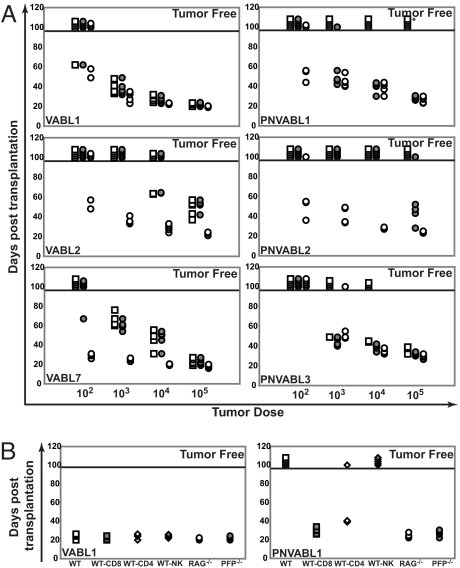Fig. 4.
v-Abl+ pfp−/−-derived plasmacytomas display an unedited phenotype. (A) Transplantation analysis of v-Abl+ pfp+/+ (VABL)- and v-Abl+ pfp−/− (PNVABL)-derived plasmacytomas (total n = 3 shown for each tumor type). All samples were derived from ascites after in vivo passage through C57BL/6 RAG-1−/− mice. Ascites cells were then transferred by i.p. injection into WT mice (open squares), pfp−/− mice (shaded circles), and RAG-1−/− mice (open circles) at the indicated doses. Mice were monitored for plasmacytoma development (abdominal distension) for 100 days, after which they were declared tumor-free (above solid bar). Asterisk represents a PNVABL1 tumor that escaped in 1 WT mouse after 107 days. (B) Immune-mediated rejection analysis of VABL and PNVABL plasmacytomas (representative shown for each tumor type). One hundred thousand ascites cells were transferred by i.p. injection into WT mice (open squares), RAG-1−/− mice (open circles), pfp−/− mice (shaded circles), or WT mice with weekly antibody-mediated depletion of CD8 T cells (shaded squares), CD4 T cells (open diamonds), or NK cells (shaded diamonds). Mice were monitored as previously described.

